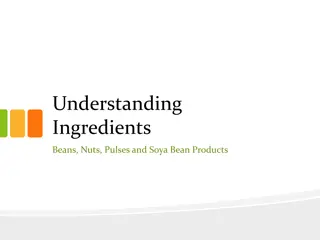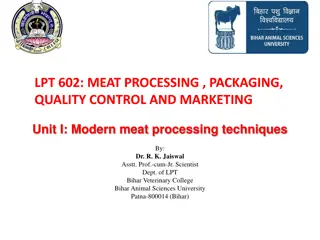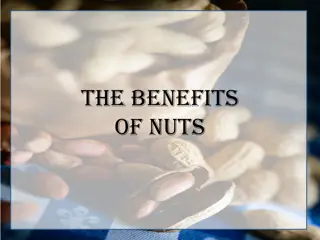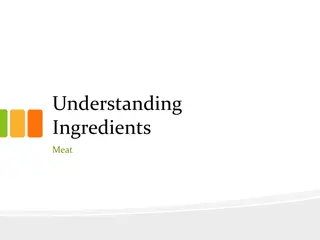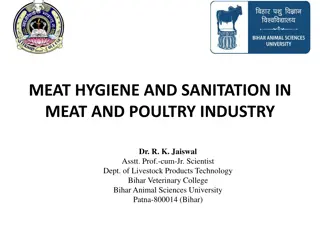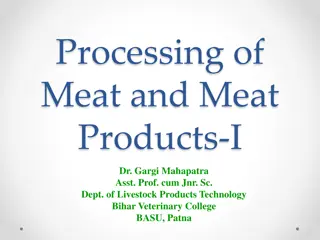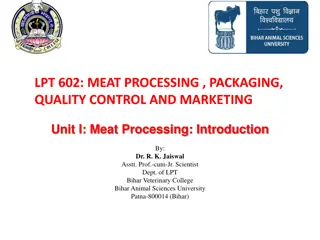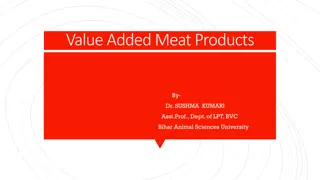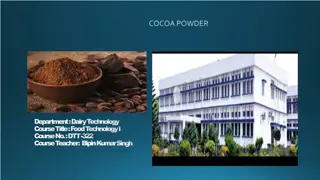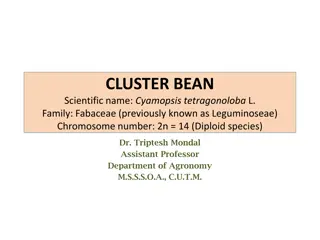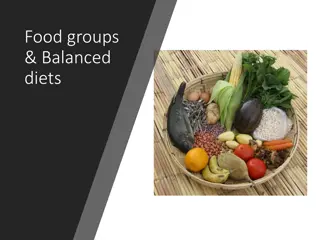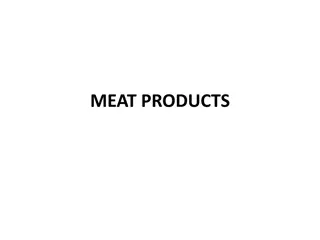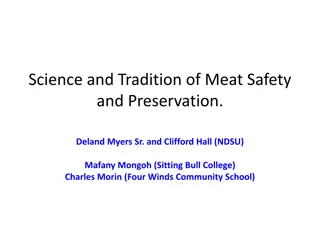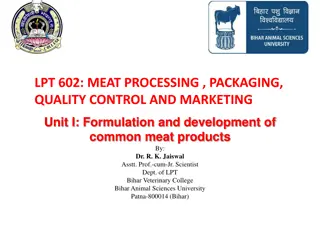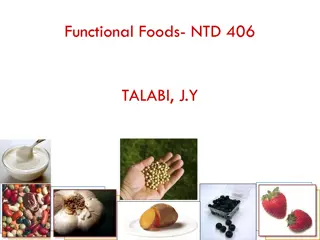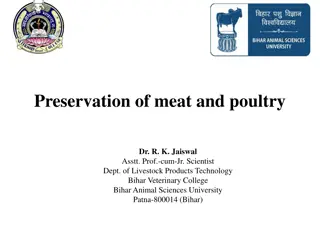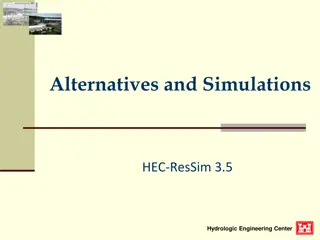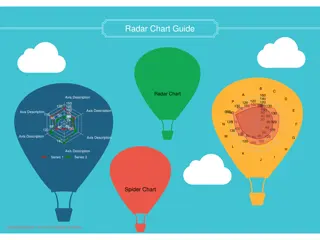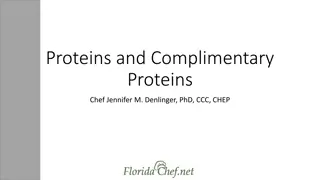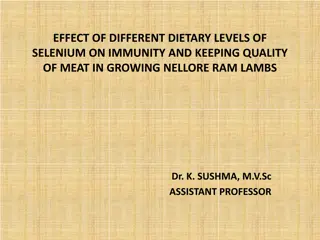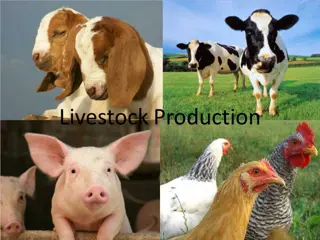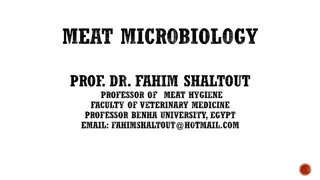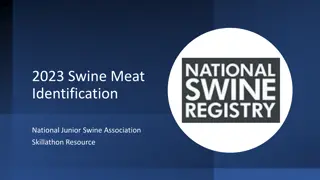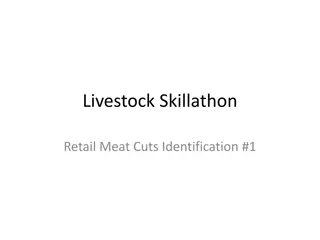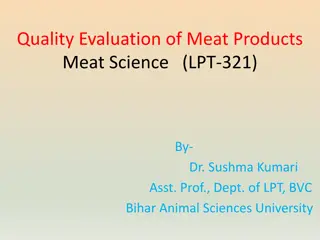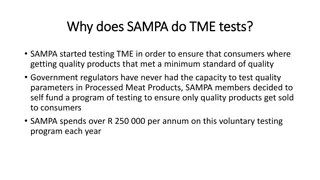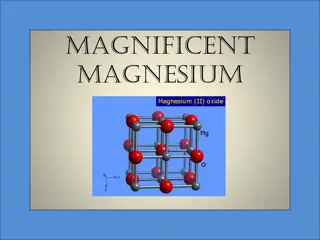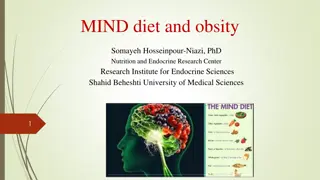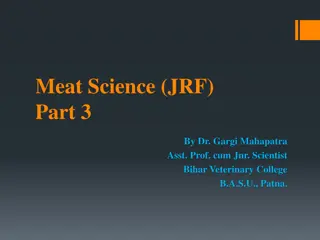Exploring Meat Alternatives: Beans, Nuts, and More
Learn about protein-rich meat alternatives like soy products, tofu, textured vegetable protein, pulses, and nuts. Discover how these alternatives offer health benefits, sustainability, and versatility in various dishes.
Download Presentation

Please find below an Image/Link to download the presentation.
The content on the website is provided AS IS for your information and personal use only. It may not be sold, licensed, or shared on other websites without obtaining consent from the author. Download presentation by click this link. If you encounter any issues during the download, it is possible that the publisher has removed the file from their server.
E N D
Presentation Transcript
Meat Alternatives Chapter 15: Meat, Poultry, Fish, Eggs, Beans and Nuts Group
What I Will Learn To assess the value of protein alternatives like beans and nuts in the diet
Soya Beans There are a number of different products made from soya beans on the market that can be used as high-protein alternatives to meat. Soya products are cheaper and more sustainable to produce than meat because they require less land and will grow in any climate. These products are like meat in nutritive value but contain fibre and lack saturated fat, making them healthier.
Tofu Tofu is a white, creamy, high-protein food made by separating soya milk into curds (tofu) and whey and then pressing the curds into cubes or blocks. It can be used in many ways: Cheese substitute in vegan pizza Chicken substitute in a stir-fry Marinated to make kebabs Blended with fruit into a smoothie or mousse Creamed with spices and herbs to make savoury dips Mixed with onion, garlic and herbs to form into burgers Coated in flour or egg and breadcrumbs Grilled or fried
Textured Vegetable Protein (TVP) TVP is flavoured and shaped to resemble meat (chunks, mince and steaks). TVP is usually bought dried. Once reconstituted with water, it can be used in a huge variety of dishes, e.g. lasagne, spaghetti bolognese, burgers, stew, shepherd s pie. Some non-vegetarians use one-third TVP to two-thirds meat in dishes because it is healthier than using meat alone.
Pulse Vegetables Peas, beans and lentils are also used as meat substitutes because of their high protein content. Pulses often need soaking before use.
Nuts Nuts are important in the diet because they are a rich source of omega fatty acids, fibre, iron and calcium. They include peanuts, pistachio, almonds, walnuts, cashew and pine nuts. They add texture and variety to recipes and meals.
Nuts (continued) Nuts can be used in sweet dishes, e.g. pecan pie, and savoury dishes, e.g. chicken satay. They are available whole, flaked, chopped and ground. They keep well, and are easy to store. They are high in calories so must be restricted in low-calorie diets. Some people are allergic to nuts and must avoid them.
Quorn Quorn is a leading brand of mycoprotein food products. Mycoprotein is a term for protein-rich foodstuffs made from processed edible fungus. Quorn is produced as both a cooking ingredient and as a range of ready meals. It can be used for dishes such as pizza, lasagne and shepherd s pie.
Case Study Martin is a student living away from home for the first time. He in his first year in college and living on a limited budget. He is on the college s rugby team and has been told he needs to build muscle. He knows that he needs to include protein in his diet for growth and repair of cells, but cannot afford a lot of meat. What dietary changes could he make that would increase his protein intake but stay within a limited budget?
Practical Class Brief Prepare and serve a smoothie that is rich in protein and suitable for a vegan.
Meat Alternatives: Quick Revision 1. Write an informative note on soya bean products. 2. Explain what Quorn is and how it can be used in the diet. 3. Assess the value of protein alternatives in the diet.


